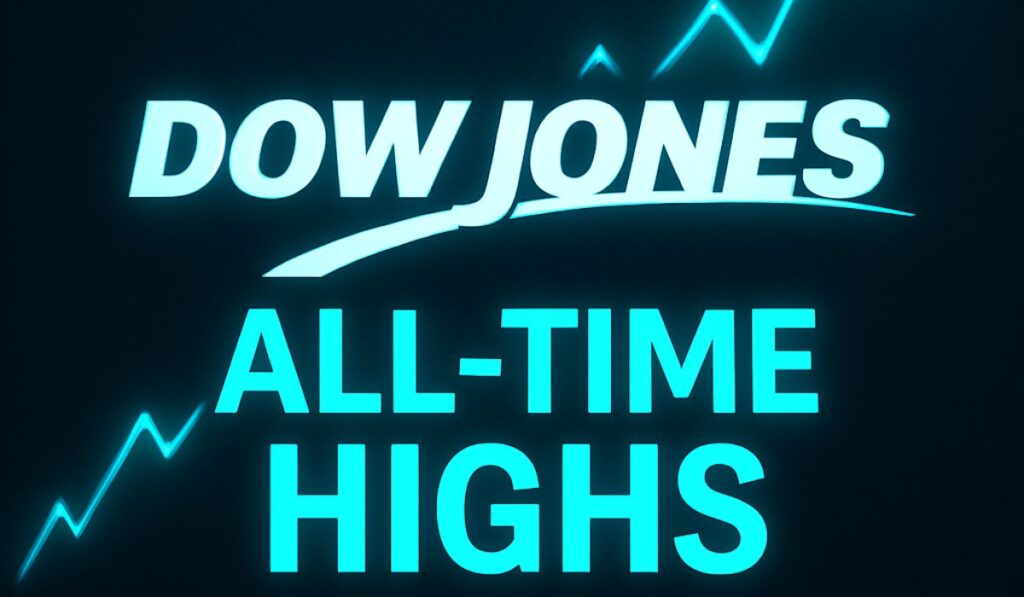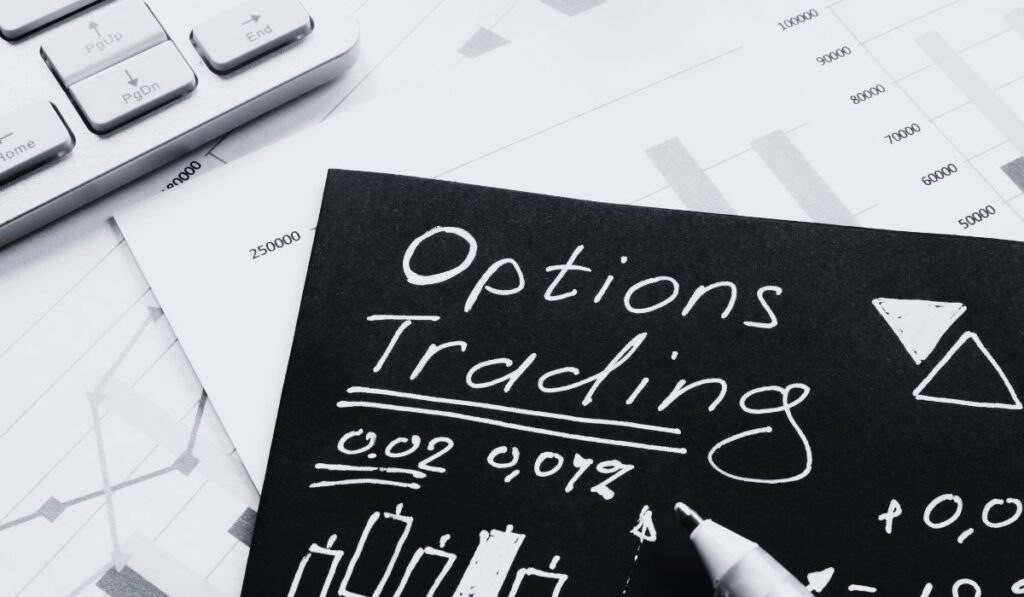Futures vs Options: Which is Better for Day Trading?

Futures vs options which is better for day trading – Futures and options are two popular financial instruments that allow traders to speculate on the price movements of underlying assets like stocks, commodities, and currencies. Both futures and options contracts are agreements between two parties, but their structure and payoff profiles differ.
Understanding Futures and Options
Futures contracts obligate the buyer to purchase and the seller to sell a specific asset at a predetermined price and date. They are standardized contracts traded on exchanges, offering high leverage and potential for substantial profits or losses. On the other hand, options contracts give the buyer the right, but not the obligation, to buy or sell an underlying asset at a specific price within a specified timeframe.
Options provide flexibility and risk management tools, but they also have time decay, meaning their value diminishes as the expiration date approaches.
Day Trading and Its Suitability
Day trading involves buying and selling financial instruments within the same trading day, aiming to capitalize on short-term price fluctuations. Day trading requires high levels of skill, discipline, and risk management, and it’s not suitable for everyone.
Futures and Options in Day Trading
Futures contracts are more suitable for day trading than options contracts due to their lower costs and faster execution times. They also provide greater leverage, allowing traders to control larger positions with smaller capital outlays. However, futures carry higher risks than options because they involve unlimited potential losses.
Options contracts, while offering more flexibility and risk management tools, are less suitable for day trading due to their higher costs, slower execution times, and time decay.
Key Differences Between Futures and Options
- Obligation: Futures contracts are binding agreements, while options contracts give the buyer the right, but not the obligation, to buy or sell the underlying asset.
- Leverage: Futures contracts offer higher leverage than options contracts, meaning traders can control larger positions with smaller capital outlays.
- Time Decay: Options contracts have time decay, meaning their value diminishes as the expiration date approaches. Futures contracts do not have time decay.
- Risk: Futures contracts carry higher risks than options contracts because they involve unlimited potential losses.
Factors to Consider When Choosing Between Futures and Options
- Trading Style: Futures contracts are better suited for day traders who prefer high leverage and fast execution times. Options contracts are more suitable for traders who prefer flexibility and risk management tools.
- Risk Tolerance: Futures contracts involve higher risks than options contracts. Traders with a higher risk tolerance may prefer futures contracts, while those with a lower risk tolerance may prefer options contracts.
- Capital: Due to their higher leverage, futures contracts require a larger capital outlay than options contracts. Traders with limited capital may prefer options contracts.
Futures Trading for Day Trading
Futures trading is a popular choice for day traders due to its high leverage and potential for significant profits. However, it’s crucial to understand the mechanics of futures trading and the associated risks before venturing into this market.
Futures Trading Mechanics, Futures vs options which is better for day trading
Futures contracts represent an agreement to buy or sell an underlying asset at a predetermined price on a specific future date. Day traders utilize futures contracts to capitalize on short-term price fluctuations. The mechanics of futures trading involve margin requirements and leverage, which can amplify both profits and losses.
- Margin Requirements: Futures trading requires traders to deposit a portion of the contract’s total value, known as margin. This margin acts as a security deposit to cover potential losses.
- Leverage: Futures contracts offer significant leverage, meaning traders can control a larger position with a relatively small initial investment. For example, a $1,000 margin deposit might allow a trader to control a $100,000 futures contract, providing a leverage ratio of 100:1.
Advantages of Futures for Day Trading
Futures trading offers several advantages for day traders, primarily due to their high leverage and liquidity.
- High Leverage: Leverage magnifies both profits and losses, allowing day traders to potentially generate substantial returns on their investments. However, it’s crucial to manage risk effectively to avoid substantial losses.
- Liquidity: Futures markets are highly liquid, meaning traders can easily enter and exit positions with minimal impact on prices. This liquidity ensures efficient execution of trades and minimizes slippage, the difference between the expected and actual trade price.
- Variety of Contracts: Futures contracts are available for a wide range of underlying assets, including commodities, currencies, indices, and interest rates. This diversity allows day traders to diversify their portfolios and capitalize on various market opportunities.
Risks Associated with Futures Trading
Futures trading carries inherent risks, primarily due to the high leverage and volatility of the market.
- Potential for Large Losses: Leverage amplifies both profits and losses. A small price movement against a trader’s position can result in significant losses, exceeding the initial margin deposit.
- Market Volatility: Futures markets are known for their volatility, with prices fluctuating rapidly. This volatility can create opportunities for profit but also poses significant risks, as sudden price movements can lead to substantial losses.
- Margin Calls: If the market moves against a trader’s position, the brokerage firm may issue a margin call, requiring the trader to deposit additional funds to maintain the margin requirement. Failure to meet a margin call can lead to the liquidation of the trader’s position.
Examples of Popular Futures Contracts for Day Trading
Several popular futures contracts are frequently traded by day traders. These contracts cover various asset classes, including:
- S&P 500 Index Futures (ES): This contract tracks the performance of the S&P 500 index, providing a way to trade the broader stock market.
- Crude Oil Futures (CL): These contracts reflect the price of crude oil, a crucial commodity in the global economy.
- Gold Futures (GC): Gold futures allow traders to speculate on the price of gold, a traditional safe-haven asset.
- Euro Futures (6E): This contract tracks the value of the euro against the US dollar, providing an opportunity to trade the currency market.
Options Trading for Day Trading: Futures Vs Options Which Is Better For Day Trading

Options trading is a popular strategy among day traders, offering potential for high returns but also significant risk. Understanding the mechanics of options trading is crucial before venturing into this complex market.
Understanding Options Mechanics
Options contracts are agreements that give the buyer the right, but not the obligation, to buy or sell an underlying asset at a predetermined price (strike price) on or before a specific date (expiry date). The price of an option is called the premium, which reflects the value of the right to buy or sell the underlying asset.
There are two main types of options:
- Call Options: Give the buyer the right to buy the underlying asset at the strike price.
- Put Options: Give the buyer the right to sell the underlying asset at the strike price.
The premium is paid upfront by the buyer to the seller, who has the obligation to fulfill the contract if the buyer exercises their right. The premium is influenced by several factors, including:
- Underlying Asset Price: As the price of the underlying asset increases, call options become more valuable, while put options become less valuable. Conversely, as the price of the underlying asset decreases, put options become more valuable, while call options become less valuable.Deciding between futures and options for day trading depends on your risk appetite and trading style. Futures offer leverage, while options provide flexibility with limited risk. But no matter your choice, mastering technical analysis is crucial for making informed decisions.
Check out this guide on how to use technical analysis for crypto trading to gain a better understanding of market trends and identify potential opportunities. Once you’ve grasped the basics of technical analysis, you can then delve deeper into the nuances of futures and options trading and choose the strategy that best suits your needs.
- Strike Price: The strike price is the price at which the buyer can buy or sell the underlying asset. A lower strike price for a call option or a higher strike price for a put option generally results in a higher premium.
- Time to Expiry: Options have a limited lifespan, known as the expiry date. As the expiry date approaches, the value of the option decreases, a phenomenon known as time decay. Options with longer expiry dates generally have higher premiums.
- Volatility: Higher volatility in the underlying asset price generally leads to higher premiums, as there is a greater chance of the option becoming profitable.
Advantages of Options for Day Trading
Options trading offers several advantages for day traders:
- Limited Risk Potential: Options contracts have a maximum loss equal to the premium paid. This is unlike buying or selling the underlying asset, where losses can be unlimited.
- Leverage: Options provide leverage, allowing traders to control a large amount of underlying asset with a relatively small investment. For example, a single option contract can represent 100 shares of stock, enabling traders to amplify their potential gains and losses.
- Flexibility: Options offer flexibility in trading strategies, allowing traders to profit from both rising and falling markets. Call options are used to profit from rising prices, while put options are used to profit from falling prices.
Risks of Options Trading
Despite the advantages, options trading also comes with significant risks:
- Time Decay: The value of options decreases over time, regardless of the underlying asset price. This is known as time decay and can significantly erode the value of options, especially as the expiry date approaches.
- Complex Strategies: Options trading involves complex strategies that require a deep understanding of the market and the ability to manage risk effectively. Using complex strategies without proper knowledge can lead to substantial losses.
- Volatility: High volatility in the underlying asset price can amplify both gains and losses, making options trading a high-risk proposition.
Popular Options Strategies for Day Trading
Several popular options strategies are used by day traders, including:
- Covered Call Writing: A covered call involves selling a call option on an underlying asset that the trader already owns. This strategy generates income from the premium received but limits potential upside gains.
- Cash Secured Put Writing: This strategy involves selling a put option on an underlying asset and having enough cash on hand to buy the asset if the option is exercised. This strategy generates income from the premium received but exposes the trader to potential losses if the underlying asset price declines.
- Bullish Call Spread: This strategy involves buying a call option with a lower strike price and selling a call option with a higher strike price. This strategy limits potential losses but also limits potential gains.
- Bearish Put Spread: This strategy involves buying a put option with a higher strike price and selling a put option with a lower strike price. This strategy limits potential losses but also limits potential gains.
Comparing Futures and Options for Day Trading

Day trading in futures and options involves significant risks and requires a deep understanding of each instrument’s characteristics. Both offer leverage, but they differ in their risk profiles, trading costs, and suitability for different trading styles. Understanding these differences is crucial for making informed decisions about which instrument aligns better with your risk tolerance and trading goals.
Leverage and Risk Profiles
Futures and options contracts offer leverage, enabling traders to control a larger position with a smaller capital outlay. However, this leverage amplifies both potential profits and losses.
- Futures contracts provide fixed leverage, determined by the contract’s size and margin requirements. For instance, a futures contract for 100 ounces of gold might require a margin of $5,000, allowing you to control a $500,000 position with a 10% margin.
- Options contracts offer variable leverage, dependent on the option’s premium and underlying asset price. The leverage in options trading can fluctuate significantly, especially for out-of-the-money options with lower premiums.
The risk profiles of futures and options also differ:
- Futures contracts expose traders to unlimited risk as the potential losses are not capped. The market can move against your position indefinitely, leading to significant losses exceeding your initial margin deposit.
- Options contracts offer limited risk, as the maximum loss is capped at the premium paid for the option. This feature makes options contracts attractive for traders seeking to limit their potential downside.
Trading Costs and Commissions
Futures and options trading involve different costs and commissions.
- Futures contracts typically have lower trading costs compared to options contracts. The primary costs associated with futures trading are brokerage fees, exchange fees, and margin interest.
- Options contracts involve higher trading costs, including brokerage fees, exchange fees, and premium payments. The premium paid for an option represents the cost of acquiring the right to buy or sell the underlying asset.
Suitability for Different Trading Styles and Risk Tolerances
Futures and options cater to different trading styles and risk tolerances.
- Futures contracts are more suitable for traders with a higher risk tolerance and who prefer to take larger positions with a fixed leverage. They are well-suited for scalping and trend-following strategies, where rapid price movements are expected.
- Options contracts are more suitable for traders with a lower risk tolerance and who prefer to control their potential losses. They are well-suited for hedging strategies, income generation, and taking advantage of specific market conditions.
Scenarios for Choosing Between Futures and Options
- Scenario 1: A trader with a high risk tolerance and seeking to capitalize on a strong upward trend in the stock market might prefer futures contracts. Futures contracts offer higher leverage and potential for larger profits, but also expose them to unlimited risk.
- Scenario 2: A trader with a lower risk tolerance and seeking to protect their portfolio from a potential market downturn might prefer options contracts. Options contracts provide limited risk and flexibility to adjust their position based on market movements.
- Scenario 3: A trader who anticipates a specific price movement in a particular stock might consider options contracts. Options contracts offer a range of strategies, such as buying calls or puts, to profit from specific price movements.
Trading Strategies for Futures and Options

Day trading strategies for futures and options differ significantly based on the underlying asset’s price movement and the trader’s risk tolerance. These strategies can be categorized as either trend-following or mean-reverting, each with its own unique approach and risk management considerations.
Futures Trading Strategies
Futures trading strategies involve leveraging the price movements of underlying assets like commodities, indices, or currencies.
- Scalping: Scalping is a short-term strategy that involves entering and exiting trades quickly, aiming to profit from small price fluctuations. Scalpers rely on high-frequency trading algorithms to identify and exploit fleeting opportunities, often using technical indicators to spot price reversals.
- Trend Trading: Trend trading involves identifying and capitalizing on the prevailing market trend. Trend traders use technical indicators to confirm the direction of the trend and enter trades in the direction of the trend. This strategy is typically employed for longer-term trades than scalping, aiming to capture larger price movements.
- Arbitrage: Arbitrage involves simultaneously buying and selling the same asset in different markets to exploit price discrepancies. This strategy aims to profit from the temporary mispricing of assets, requiring traders to be highly responsive and knowledgeable about market conditions.
Options Trading Strategies
Options trading strategies involve using options contracts to profit from the underlying asset’s price movements or volatility. Options contracts provide the right but not the obligation to buy or sell the underlying asset at a specific price within a specified timeframe.
- Covered Calls: A covered call involves selling a call option on an asset that the trader already owns. This strategy aims to generate income from the premium received for selling the call option, while limiting potential losses by owning the underlying asset.The risk associated with this strategy is that the underlying asset’s price may rise above the strike price, leading to a loss on the option.
- Cash-Secured Puts: A cash-secured put involves selling a put option and holding an equivalent amount of cash to cover the potential obligation to purchase the underlying asset. This strategy aims to generate income from the premium received for selling the put option, while limiting potential losses to the cash secured.The risk associated with this strategy is that the underlying asset’s price may fall below the strike price, leading to a loss on the option.
- Straddles: A straddle involves simultaneously buying a call option and a put option with the same strike price and expiration date. This strategy aims to profit from a significant price movement in either direction, regardless of whether the price rises or falls.The risk associated with this strategy is that the underlying asset’s price may remain relatively stable, leading to a loss on both options.
Risk Management Considerations
- Stop-Loss Orders: Stop-loss orders are essential for limiting potential losses on trades. They automatically exit a trade when the price reaches a predetermined level, minimizing the potential for significant losses.
- Position Sizing: Position sizing involves determining the appropriate amount of capital to allocate to each trade. This helps to manage risk by limiting the potential loss on any single trade, ensuring that losses do not exceed a predetermined percentage of the trading capital.
- Diversification: Diversifying across different asset classes and trading strategies can help to reduce overall portfolio risk. By spreading investments across multiple assets, traders can mitigate the impact of any single investment performing poorly.
Risk/Reward Profiles of Day Trading Strategies
| Strategy | Risk | Reward |
|---|---|---|
| Scalping | High | Low |
| Trend Trading | Moderate | Moderate |
| Arbitrage | Low | Low |
| Covered Calls | Moderate | Low |
| Cash-Secured Puts | Moderate | Low |
| Straddles | High | High |
Risk Management for Day Trading

Day trading, with its fast-paced nature and potential for high profits, also comes with significant risks. Effective risk management is not just a suggestion, but a crucial component of a successful day trading strategy. It involves taking calculated steps to protect your capital and minimize potential losses.
Understanding Risk Management Techniques
Risk management techniques help you control your exposure to potential losses in the market. These techniques are essential to ensure that your trading strategy is sustainable and doesn’t lead to catastrophic losses.
Stop-Loss Orders
Stop-loss orders are pre-set instructions to automatically exit a trade when the price of an asset reaches a specific level. They are a vital tool for limiting losses on individual trades.
- How Stop-Loss Orders Work:You set a stop-loss order at a price below your entry point for a long position or above your entry point for a short position. When the market price reaches your stop-loss level, the order triggers, automatically selling your position and limiting your potential loss.
- Example:Suppose you buy 1 futures contract for $100,000 at $1,000 per contract. You set a stop-loss order at $990 per contract. If the price falls to $990, your stop-loss order will automatically sell your contract, limiting your loss to $1,000 (10 points x $100 contract size).Choosing between futures and options for day trading is a personal preference, but diversification is key for any strategy. To create a well-rounded portfolio, consider investing in different cryptocurrencies, and you can check out how to create a diversified crypto trading portfolio for some ideas.
Ultimately, the best choice for day trading depends on your risk tolerance, trading style, and the specific market conditions.
Position Sizing
Position sizing refers to determining the appropriate amount of capital to allocate to each trade. It is a crucial aspect of risk management as it dictates the potential impact of a winning or losing trade on your overall trading capital.
- Importance of Position Sizing: A good position sizing strategy helps you avoid putting too much capital at risk on any single trade, preventing significant losses that could wipe out your account.
- Example: A 1% risk rule is a common approach. This means you allocate 1% of your trading capital to each trade. If you have a $10,000 trading account, you would risk $100 on each trade. This rule ensures that even if you lose multiple trades in a row, you won’t lose a significant portion of your capital.
Risk Management Plan
A risk management plan Artikels your approach to managing risk in your day trading. It acts as a blueprint to guide your trading decisions and ensure that you stay disciplined.
A well-structured risk management plan typically includes:
- Risk Tolerance:Determine your personal risk tolerance, which is the level of risk you are comfortable taking.
- Stop-Loss Orders:Define how you will use stop-loss orders to limit losses on individual trades.
- Position Sizing:Establish a clear position sizing strategy to manage the overall risk of your trading account.
- Trading Psychology:Recognize potential emotional biases that can influence your trading decisions and develop strategies to mitigate them.
Conclusion

Choosing between futures and options for day trading depends heavily on your individual risk tolerance, trading style, and financial goals. Both instruments offer unique opportunities and challenges, so understanding their respective strengths and weaknesses is crucial.Futures and options present distinct advantages and disadvantages, influencing their suitability for different traders.
Comparing Futures and Options for Day Trading
Futures and options differ significantly in terms of their risk profiles, leverage potential, and trading strategies.
- Futures offer high leverage, allowing for amplified profits but also substantial losses. This makes them suitable for traders seeking to maximize returns but willing to accept higher risk.
- Options provide more flexibility in terms of potential profit and loss, as they allow traders to define their risk exposure. They are often preferred by traders with a more conservative approach or those seeking to manage risk more effectively.
Choosing the Right Instrument
The choice between futures and options depends on your individual trading style and risk tolerance.
- Traders who are comfortable with high leverage and are willing to accept substantial risk may find futures more appealing.
- Traders who prefer more control over their risk exposure and are seeking a less volatile trading experience may find options more suitable.
FAQ Corner
What are the key differences between futures and options contracts?
Futures contracts obligate you to buy or sell the underlying asset at a predetermined price and date, while options grant you the right, but not the obligation, to do so.
What are the common trading strategies for day trading futures and options?
Popular day trading strategies for futures include scalping, trend trading, and arbitrage. For options, strategies like covered calls, cash-secured puts, and straddles are commonly employed.
What are some essential risk management techniques for day trading?
Effective risk management techniques include using stop-loss orders to limit potential losses, employing position sizing to manage risk exposure, and diversifying your portfolio.
How do I choose between futures and options for day trading?
Consider your risk tolerance, trading style, and market outlook. If you prefer high leverage and liquidity, futures might be suitable. For limited risk and flexibility, options may be a better choice.

![Funded Picker Review (2025) + 15% Discount Code [PFR15] 1 funded picker](https://propfirmreviews.net/wp-content/uploads/2025/08/funded-picker-1024x576.jpg)



